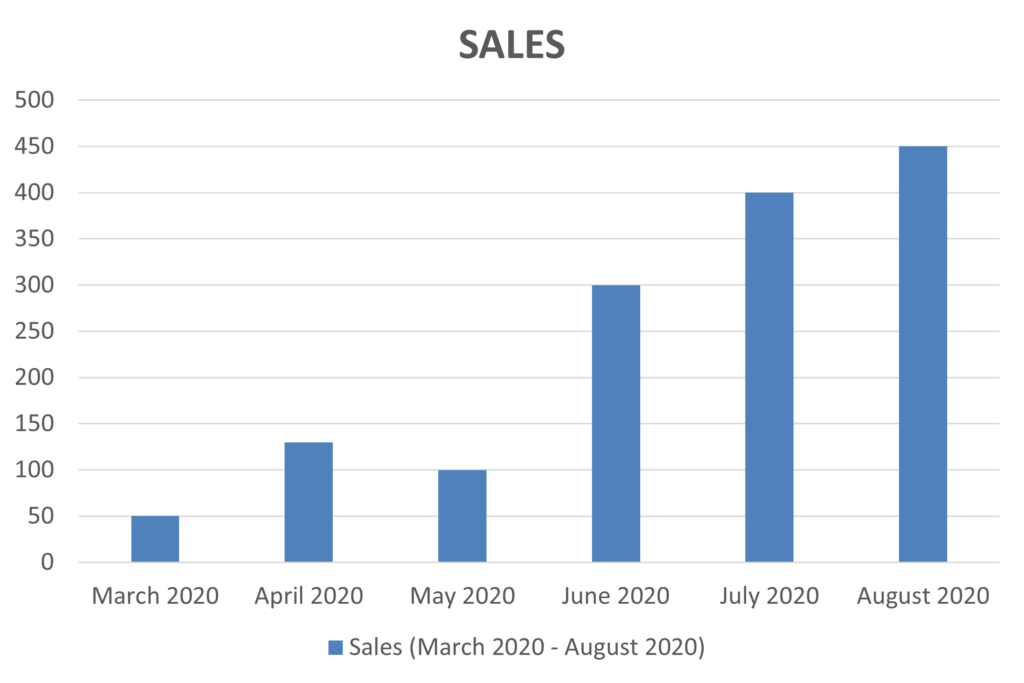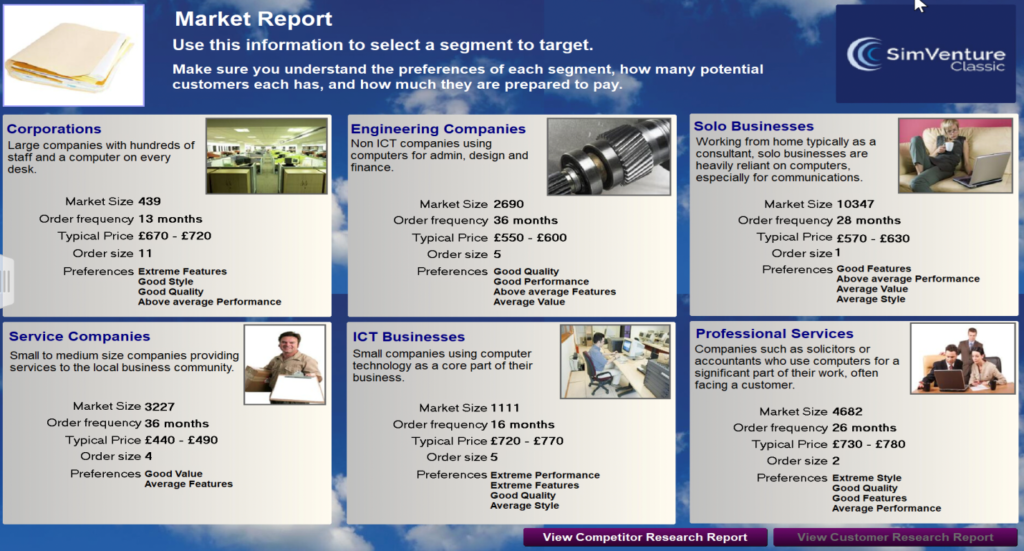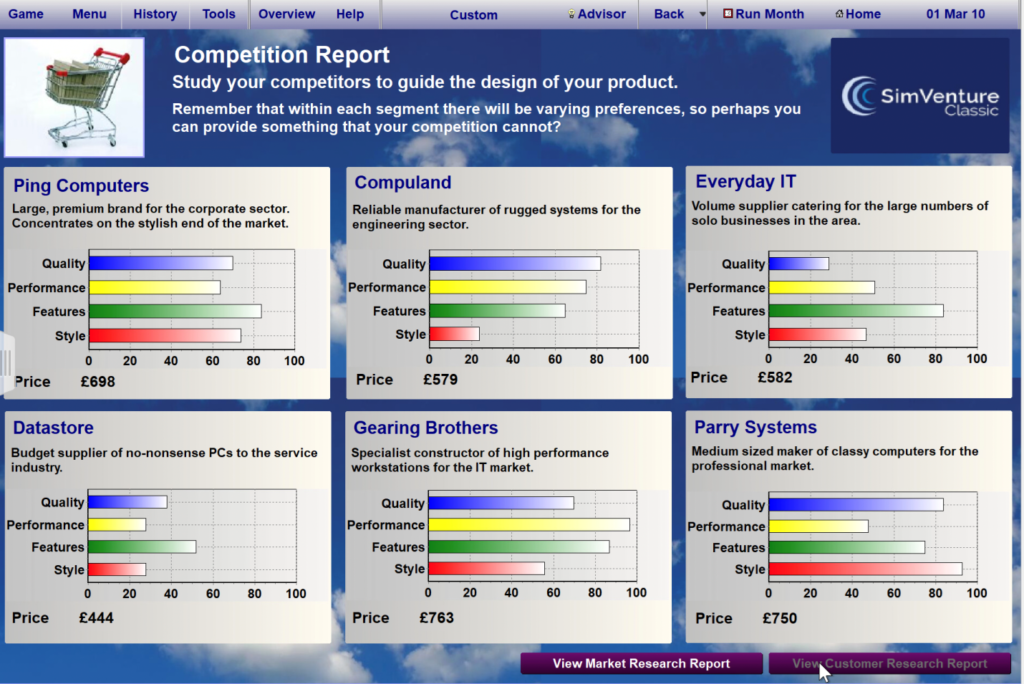Fundamentals In Business Managemnet-BS7026 Sample
INTRODUCTION
Star-IT Company is the startup venture for manufacturing and selling of computers. The UK based Company was founded in 2020 and having it’s headquarter in small business center of Upminister, London while warehouse is in Ilford. At the time of it establishment, Star-IT was having intentions of serving engineering business sector. In order to run smooth operations, there were five basic departments (marketing, finance, HRM, operations, and technology) in the company.
There is probability of risk for all businesses in initial phase of its startup so as Star-IT experienced the sale decline in initial months according to its sales report. After its establishment in March 2020, April was very successful month with increased sales of £50 t0 £130 but sales were decreased in May 2020 (£100) (see appendix A).
Thus, the marketing manager decided to revise pricing strategies for increasing sales. Although, there was conflict of interest between finance and marketing department due to payment of monthly loan installments but discussion and team coordination between managers converted the decision of revised pricing strategy into mutual decision. Finally, the increase of sales up to £450 by August 2020 proved it as prudent decision for Star-IT.
MARKETING
It was considered mandatory to get knowledge about the demand of particular product before entering in any market. Therefore, the in-depth research about the targeted customers, customer support, sales channels, promotions, sale strategies, pricing strategies, analysis of competitors was prerequisite (Ahn, 2008).
For instance, the theory of economic separation states that marketing research is very important for filling gap between manufacturers and customers in order to escalate the demand for products. So, in order to carry out initial marketing research and analysis of various competitors, the services of expert organizations were hired due to lack of expertise and skills in starting months. In the meantime, I got the results of customer and market research reports that exhibited the thinking of customers about my company’s products and the preferences of various market segments respectively. According to the results of customer’s research report, customers find the products as having good quality but very expensive.
In respond to these results and the comparison of preferences in different market segments, the preferred segment for “Star-IT” was “Engineering businesses”. Furthermore, the basis factors behind this selection were price of products (£500-£600), frequency of orders (36 months), preference of engineering sector (good quality, good performance, low prices), and size of market (2690) (see appendix B).
Additionally, the significance of 4ps cannot be neglected during discussion of marketing. Initially, Star-IT planned to sale computers online for controlling its startup expenditures. In selecting the promotional medium among radio vs. newspaper there was conflict between managers. Some managers thought that newspaper is less costly way to advertise but other though that hardly few people read newspaper now-a-days (Bartels, 2012). Finally, company used the medium of newspaper for its promotion and creating awareness among prospective consumers about its products by mutual discussion and weighing the pros and cons of both methods.
In addition to this, among the porter’s generic strategies, the focus differentiation strategy was selected in starting month of startup that encouraged me to keep prices higher for short term profit maximization but this did not worked. As, according to (Bartels, 2012), higher price is only acceptable if it is according to perceptions of customers about specific product otherwise it is totally failure for corporation.
Later on, based on the losses, decreased sales, and the customer research report, it was decided to lower the prices of products by opting “price penetration strategy”. The price of computers in starting months was £650 but the revised price according to new strategy was £500 that was very helpful to gain competitive advantage over “Compuland” (seller of computers to engineering businesses at price of £579) (see appendix C). Moreover, it was very helpful in recovering the losses incurred in initial stage of business.
FINANCE
The finance department of any company is having the biggest responsibilities of juggling money for business startup, evaluating sources of funding, accounts monitoring, handling of cash flows, handling of profit and loss, designing policies of credit control etc. thus, it is considered as company’s support system or backbone (Cameron & Quinn, 2011).
There was opening balance of £11000 in the business account of Star-IT for starting a business. The business was gradually taking place in market but I was facing serious financial difficulties in designing computers due to out of budget. The initial capital was not adequate for running the business operations smoothly because low cash in account was making it difficult for Company to pay suppliers on time. There were few options for juggling funds that were selling equity, overdraft, loan form bank, friends, or family. So, the most viable option according to my thoughts was to get £50,000 loan from bank at 13% rate of interest for three years that raised the issue of “economies of scale” (difficulty in borrowing at favorable interest rate).
In that case, I had to pay monthly installment of £1670 per month to bank that was less than the monthly average profit of £2000. The reason for not considering friends and family for loan was that it was not possible to arrange this huge amount from them but the interest rate was comparatively low (5.5%). There was conflict over this issue between finance manager and finance director but sorted out with mutual discussion. Therefore, in the starting of 3rd month the request was forwarded by me for loan to governing authorities in order to manage operations and to train employees.
It is agreed by researchers that there is probability of risk for all types of investors (organizations, individuals, financial institutions and managers) in the world of business (Caponetto , Earp , & Ott,, 2014).
Therefore, investors must be capable of handling and alleviating those risks. In case of Star-IT Company, agency cost was the major risk that refers to the cost incurred due to conflict between agent and principal over any matter. For instance, in starting of business setup, specialized agencies were outsourced for taking pricing decisions, customer research, and competitor’s research and the company faced loss.
The leading cause behind that loss was conflict between marketing and finance department over pricing strategy. Thus, investors started hesitating to invest in Star-IT because the profit of company was going in negative figures (-£1000) during second month of company’s startup. Moreover, there was need for taking wise decisions to get back the trust of investors that was done by revising pricing strategy by keeping in mind the interest of all departments (Dagnino & Bellotti, 2015).
HUMAN RESOURCE MANAGEMENT
Human Resource Management is equally important department like finance and marketing even more than of these because finance and marketing managers are hired through this department. This department has the responsibility for taking various decisions related to hiring, training, and management of employees (Gibb, 2002).
The managers in Star-IT Company considered the establishment of flexible and relaxed working environment significant for both managers and employees to perform better. For instance, the sound structure of HRM is prerequisite for creating such environment. The core objective of every company is to earn profit so the theories of growth and organizational behavior states that there is strong connection between growth of company and the positive behavior of employees (Gibbs, 2007).
Moreover, there was debate in Star-IT about hiring full time or part time workers as well as I thought that there is risk of more errors in the work of part time employees due to lack of repetition in their work. Additionally, the cost of retaining full time employee is higher than part time employees. Meanwhile, the request for getting loan was approved and company was able to conduct training sessions for full time employees. Therefore, this issue was resolved with sensible thinking and timely action.
The theory of Abraham’s Maslow’s hierarchy of needs state that hiring of right employees at the right roles in the company is not sufficient but the satisfaction and loyalty of employees is priority. The theory of Maslow’s discussed that the needs at all the levels of hierarch are significant to fulfill for great performance in company (Dagnino & Bellotti, 2015).
So, I tried my best to create flexible environment by providing flexible work schedule, freedom to try new methods for solving assignments, and keep them engaged in various activities. There is very vital role of motivational theory in forming the negative and positive behavior of employees in a company (Heine, Grover, & Malhotra, 2014).
In the starting months of Star-IT, employees were disturbed and dissatisfied from the performance of company due to fall in the sales but on-time salaries and bonuses were the reason of their motivation. In the mean time, the pricing strategies were revised as well as the system of rewards, appreciation, and recognition for employees was formed to push the company one step ahead towards profitability and growth.
OPERATIONS
This department is concerned for managing the operations of different departments including suppliers, distributors, direct customers etc. Moreover, other responsibilities of this department are procurement, design of product, assembling of products, and quality check and control.
(Heine, Grover, & Malhotra, 2014) Usually, at the growth stage, there is need for significant changes in organizational strategies that are reformulated due to marketing and competition forces (Laney & Latrill, 2014). So, the planning of operations at this stage was the vital part for Star-IT. As, it was not appropriate and was very complex for Star-IT to make decisions in vacuum thus, the use of bottom-up approach by Ruthvik (operations manager) for designing operational strategies was suitable.
According to bottom-up approach, practical experiences are used to make decisions instead to assumptions and Star-IT used the ideas and experience of dealing with suppliers, customers, and their own practices from previous months. The design of product is considered equally important as the features and quality of products because the satisfaction level may decrease with the non-satisfactory product design. According to the report of customer research, the design of computers was “OK” and not excellent so I will conduct further customer research and analyze competitor’s preferences further to improve design of computers.
Star-IT was getting orders with average rate 10-12 computers each month but it was failing to complete those orders due to out of capacity and financial hurdles. Instead of that, the products were continuously being manufactured by outsourcing major parts in bulk at the rate of £432.62 per order that ended up in cash crisis at the end of year.
So, I decided to use the concept of “just in time” (order the materials or inventory only when it is required in processes) for handling this situation and coordinated with finance manager to arrange the funding. Moreover, along with all the difficulties, the quality of products was not compromised as it is also exhibited in the customer’s research report (see appendix D).
TECHNOLOGY
This is the era of technology and the profitability, growth, and performance of companies are highly dependent on the use of technologies for running its operative efficiently (Wooi, 2014). Moreover, the responsiveness of business to its environment and demands of customers is greatly linked with technology (Bellotti , Berta, Gloria , & Lavagnino, 2014). The competition is very intense now-a-days that demands the indulgence of long-term sustainable practice in business to compete others and technology is prerequisite for this purpose (Zhang, Khan, & Lee, 2019).
Initially, there was not the system of information exchange between departments and employees did not know about the use of technological information and systems and the use of technological information is prerequisite for ever department of organization. Even though, the structure and framework of company was advanced in terms of information technology but due to lack of maintenance, skilled employees, adequate training sessions about the usage of infrastructure served as severe challenges for Star-IT. Moreover, the internal and external business environments are prone to changes and require time to time changes (Gibb, 2002).
Although, I was aware about the significance of maintenance and up gradation but it was not initially possible due to the lack of financial resources. After arranging some financial resources through bank loan, the system of inter-connected departments was created in Star-IT for the exchange of information for efficient working. Moreover, training sessions for employees were conducted to increase their skills and expertise. Afterwards, the situation and performance of technological department and its influence on other departments in Star-IT’ got better.
CONCLUSION
This report will be concluded by using the Gibbs reflective model (see appendix E). Moreover, each stage of this model is summarized in the below section.
DESCRIPTION OF EXPERIENCE
The purpose of this project was to run the business for six months and share the experience of running SimVenture model of business. The company was aimed to sell computers and had five basic departments. The realistic environment required strategic and tough decisions to be made which often involved a trade-off between one department and another. It allowed me to use my academic learnings to practical business environment.
YOUR FEELINGS
It was an overwhelming and exciting experience at the beginning but it later changed to anxiety as I had to tackle all the departments myself which required more work. I could feel myself sitting as an entrepreneur in a real-life business environment. I felt disappointed when a decision made did not turn out as I had perceived it to be or an unwanted threat to the business popped up.
AN EVALUATION
Overall, I am quite happy and satisfied with how I performed. It was difficult to handle business decisions at first but then eventually I got hold of it. I learned how to multi-task, handling all departments simultaneously. One advantage that I had using an entrepreneurial business was that I had full control over every decision of the business.
ANALYSIS
I struggled when trying to relate academic learnings to SimVenture as it replicated the realistic business environment which often required multiple decisions to effect by a single change. Analyzing how I handled all departments, I think I improved with time and learned how to get control over my nerves and take time to make decisions.
YOUR CONCLUSIONS
After going through the worst experience due to my flaws, I concluded that overcoming the weaknesses by using the strengths of own self and others is suggested instead of getting depressed and making the weaknesses more stronger than ever.
REFERENCES
Ahn, J. H. (2008). Application of the experiential learning cycle in learning from a business simulation game. E-Learning , Vol 5, No 2, pp 146–156.
Bartels, R. (2012). The General Theory of Marketing. Journal of Marketing, 32(1), , pp. 29-33.
Bellotti , F., Berta, R., Gloria , A., & Lavagnino. (2014). Serious games and the development of an entrepreneurial mindset in higher education engineering students’,. Entertainment Computing, Vol 5, No 4, , pp 357–366.
Cameron, K. S., & Quinn, R. E. (2011). Diagnosing and changing organizational culture: Based on the Competing Values Framework ((3rd edition). ed.). US: Jossey-Bass,.
Caponetto , I., Earp , J., & Ott,, M. (2014). Aspects of theintegration of games into educational processes’,. International Journal of Knowledge Society Research , vol 4, no. 3, pp 11–21.
Dagnino, F., & Bellotti, G. (2015). A gamified collaborative course in entrepreneurship: Focus on objectives and tools. Computers in Human Behavior, Vol 51 .
Gibb, A. (2002). In pursuit of a new “enterprise” and “entrepreneurship” paradigm for learning: Creative destruction, new values, new ways of doing things and new combinations of knowledge’. International Journal of Management Reviews, Vol 4, No 3, , pp 23.
Gibbs, A. (2007). Unique solution for unique environment: Is it possible to achieve this with the existing paradigm?’. International Journal of Entrepreneurship Education, Vol 5, , pp 93–142.
Heine, M., Grover, V., & Malhotra, M. (2014). The relationship between technology and performance: a meta-analysis of technology models. The International Journal of Management Science, Volume 31 , pp. 189-204.
Laney, E., & Latrill, P. (2014). Accounting and finance, An introduction: 7th ed. Harlow: Pearson.
Wooi, H. C. (2014). Major Theories in Finance Research,. Malaysia.: Universiti Sains .
Zhang, Y., Khan, U., & Lee, S. (2019). The Influence of Management Innovation and Technological Innovation on Organization Performance. A Mediating Role of Sustainability. Sustainability, 11(495), , pp. 1-21.
APPENDIX
APPENDIX A

Figure 1: SALES FIGURES
APPENDIX B

FIGURE 2: MARKET RESEARCH REPORT FOR STAR-IT
APPENDIX C

FIGURE 3: COMPETITION REPORT
Know more about UniqueSubmission’s other writing services:

